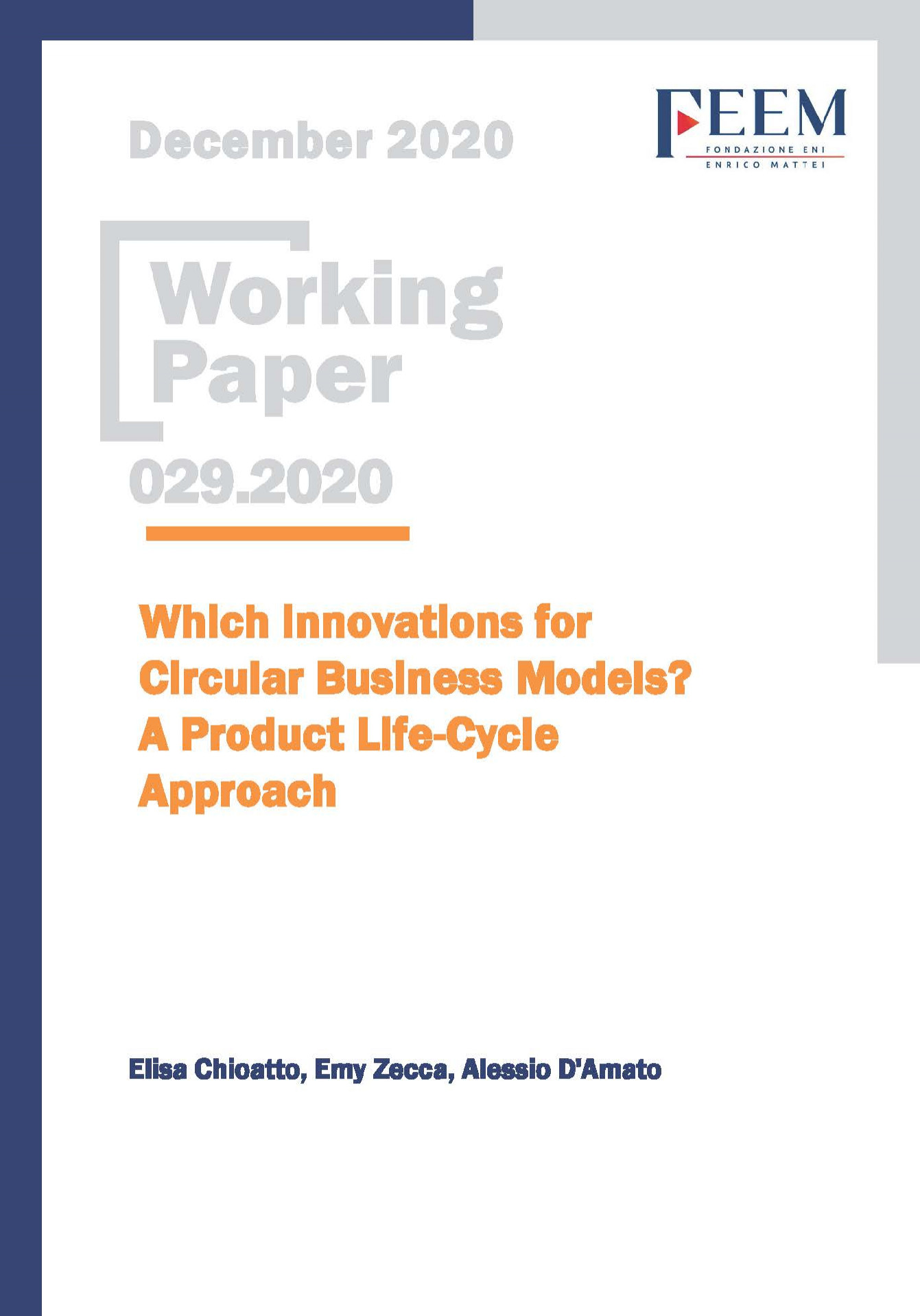Which Innovations for Circular Business Models? A Product Life-Cycle Approach

15.12.2020
L23, Q55, O32
Resource Efficiency, Eco-Innovation, Circular Economy, Circular Eco-Innovation, Circular Business Models, Small and Medium Enterprises
Firms and Cities Towards Sustainability
Stefano Pareglio
The Circular Economy concept has emerged to face current unsustainable economic trends. Circularity requires to go beyond mainstream linear business models in favour of new design strategies and production processes able to support an efficient use and a continuous flow of resources. Clarifying and promoting tools for embedding circularity in firms’ business models is becoming crucial to increase resource productivity and achieve competitive advantages. Notwithstanding eco-innovation has been recognized as a fundamental link to connect circular economy with business models restructuring, still little consensus exists on the boundaries and interlinkages among the concepts of Eco-Innovation, Circular Economy and Circular Business Models. This research contributes to the intersection of these different streams of the literature, and aims to understand which innovations can favour the transition from linear to closed-loop processes, and then to identify circular business models. Relying on a review of circular-oriented innovations, we recognize three main groups of innovations that are expected to change firms’ way of doing business in accordance with circularity, leading to the identification of an original Product Life-Cycle Archetype. Finally, relying on survey data in Emilia Romagna region, we check for the reliability of our theoretical framework in practice, analysing firms’ business strategies from a practical perspective and assessing the current implementation of an innovative path in accordance with circular priorities. The analysis reveals a positive engagement amongst the analysed firms in Emilia Romagna, in terms of cleaner production strategies. By contrast, any business innovation linked to the circular use of products has been found to be implemented.
***
Suggested citation: E. Chioatto, E. Zecca, A. D’Amato, (2020), ‘Which Innovations for Circular Business Models? A Product Life-Cycle Approach’, Nota di Lavoro 29.2020, Milano, Italy: Fondazione Eni Enrico Mattei
